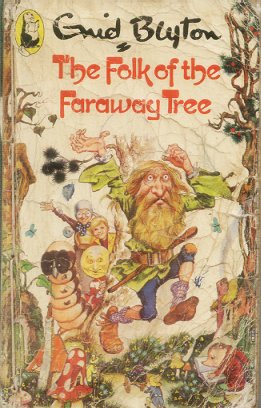Links
- Witchgrove
- Pagan Headstone Campaign
- Space Cadets
- As Matilda Mother on Friends of the Heroes
- Home-page
- Blogger
- My blog
Archives
Books that I've had my nose in whilst on fag breaks.
Monday, June 07, 2004

This is all Bookshop Kate's fault. She maliciously, and with intent, left 'The Enchanted Wood' where I would find it and start reading it, last weekend. After that, of course, I had to read the other two.
It doesn't matter what I think about these books, because I'm an adult and they weren't written for me. But I read them in the knowledge that they were amongst my very favourite childhood books, though I haven't touched them since I was about 12. Then, according to the date in the front of one of them, I got my own copies of the books.
I was 7-8 when I first read them. I'm saying that on the basis that when I was reading one of them this time around, I suddenly got a flash memory of being up my Nan and Grandad's flat, looking across to my Grandad in his armchair. Grandad died when I was 8.
What I can say is that I enjoyed them immensely. They aren't going to change my life, as they did when I was a child, but I'd recommend them to the children still. Racist? I admit I was taken aback when I saw the golliwogs mentioned, but then I thought about it. It's only been in the last 20 years that golliwogs have been politically incorrect. I had one as a child and didn't even realize that they were supposed to represent coloured people. The golliwogs in Enid Blyton 'Faraway Tree' books are all good people and, in one scene, Fanny goes running after one of them for a cuddle. The children are late 1930s-early 1940s children and therefore would have had golliwogs. It didn't make them racist. If the golliwogs were bad people then I might have been a little more sniffy, but they weren't.
Sexist? Yes, completely. In the last book, when danger looms, Silky, Bessie and Fanny are sent to wait above, while the lads all fight the good fight. But they were 1930s/1940s children - that was the prevalent attitude of the time, so it's all authentic. If they were updated, then I'd expect Jo to not even suggest it, and for Silky, Bessie and Fanny to tell him where to go if he did.
One thing that did occur to me. For the time scale, these books were perfect as they all had children sent from towns into the country as their main characters. This was a period in history when thousands of children were experiencing just that as evacuees. I wonder how many of them found comfort in these books?
I enjoyed all three. They were an easy read after all the academic texts I've read recently.